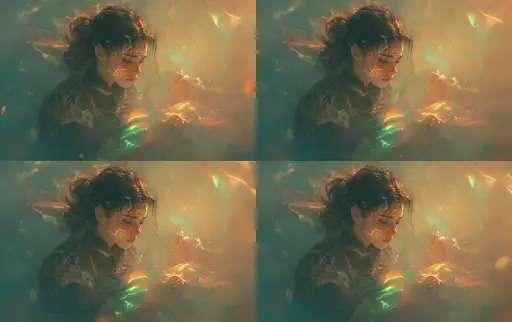Explore the Best AI Image Gallery

AI-Powered Design: Reshaping the Creative Landscape
The world of graphic design is undergoing a profound transformation, driven by the rapid advancements in artificial intelligence (AI). From automating tedious tasks to generating original designs, AI tools are empowering designers to push creative boundaries and explore new possibilities. This blog post delves into the multifaceted impact of AI on the creative industry, examining its potential uses, ethical considerations, and future trends.
Automating the Workflow: Efficiency and Enhanced Creativity
One of the most significant impacts of AI in graphic design is its ability to automate repetitive tasks. AI-powered tools can generate basic layouts, create color palettes, resize images, and even craft simple text copy, freeing up designers to focus on more strategic and creative aspects of their work. This automation not only increases efficiency but also allows designers to explore more experimental ideas without being bogged down by mundane tasks.
Generating Innovative Concepts: AI as a Creative Partner
Beyond automating workflows, AI is increasingly capable of generating original design concepts. AI algorithms can analyze vast datasets of existing designs, identify patterns and trends, and then leverage this knowledge to create novel compositions, typography choices, and visual elements. This opens up exciting possibilities for designers to collaborate with AI as a creative partner, brainstorming ideas and exploring unconventional solutions.
The Rise of Personalized Design: Tailoring Experiences
AI is also playing a crucial role in the rise of personalized design. By analyzing user data, preferences, and behavior patterns, AI algorithms can generate customized designs that resonate with individual audiences. This has significant implications for various industries, from e-commerce to marketing, allowing businesses to create more engaging and relevant experiences for their customers.
Ethical Considerations: Navigating Bias and Ownership
As AI becomes more integrated into the design process, its essential to address the ethical considerations that arise. One concern is the potential for bias in AI algorithms, which can perpetuate existing societal stereotypes or discrimination. Its crucial to ensure that AI tools are trained on diverse datasets and that their outputs are carefully reviewed to mitigate bias. Another important consideration is the question of ownership and copyright. When an AI system generates a design, who owns the rights to it? These are complex questions that require ongoing dialogue and collaboration between designers, ethicists, and policymakers.
Future Trends: The Evolution of AI in Design
The future of AI in graphic design is brimming with possibilities. We can expect to see:
- More sophisticated AI tools capable of understanding complex design briefs and generating highly customized solutions.
- Increased collaboration between human designers and AI systems, leveraging the strengths of both to create innovative designs.
- The emergence of new design paradigms and aesthetics influenced by AI-generated content.
- A focus on ethical development and deployment of AI tools in design, ensuring fairness, transparency, and accountability.
Conclusion
AI is undoubtedly transforming the landscape of graphic design, empowering designers with new tools and possibilities. By embracing this technology responsibly and ethically, we can unlock its full potential to drive creativity, innovation, and personalized experiences in the years to come.








](https://images.ai-img.art/thumbnails/150/bddf3ae4a232290858389b933c866ad3be429ef2e25c23a9f4d7713ed6e44d0b.webp)









](https://images.ai-img.art/thumbnails/150/008b5d5d49667cc2e93a5f8a8adfaa545963da99c39ff0901f5296294636400d.webp)








](https://images.ai-img.art/thumbnails/150/f9584153b4cddd8c9fab611dc10247549b275c59bc173251e37d0935874f9deb.webp)
](https://images.ai-img.art/thumbnails/150/c2c9c48b38fae37f0a457b80b084ed01ba803810fc8f488c8f610c03abc74049.webp)

](https://images.ai-img.art/thumbnails/150/4289d1230b86a96c4d556636c3167bed0ef38f850826549517e4e45db4d87bf7.webp)








](https://images.ai-img.art/thumbnails/150/f67d9af3398150f2ab1bcf250717fea134275e2ca896252b54a4d9bb3719f9ac.webp)

